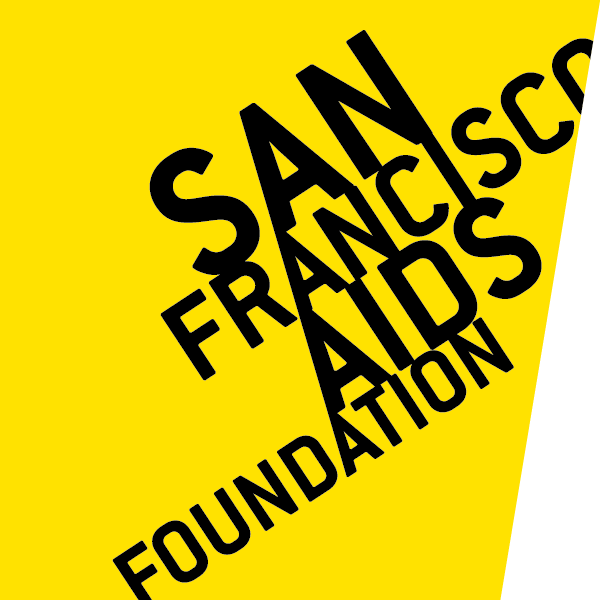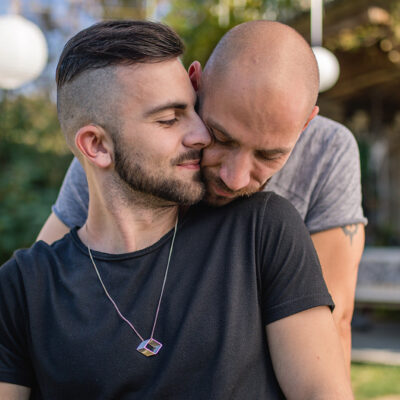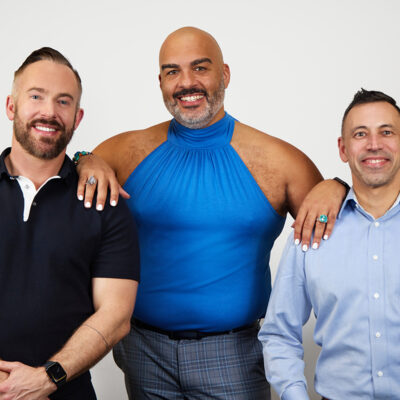Address the microaggressions–and aggressions–if you want to truly include Black people in your circle

I stepped away from a music group I truly loved after a number of situations made it clear the comfort and inclusion of Black people were not priorities for the group. The microaggressions–and outright aggressions–simply became too much.
Reflecting on my experience, I’m not sure group leaders and members at the time recognized the ways their actions led me–and other Black members–to fall away from the group. It’s not enough for queer organizations to simply open their doors and say that everyone’s welcome. I’m sharing my experience not only to live fully in my truth, but in the hopes that others might open their hearts to the many ways we must truly welcome Black people to our groups, our social events, and our communities.
My clearest warning came from a Confederate flag.
One night, as I slipped into rehearsal a few minutes late, I noticed something odd in the empty rows of chairs: a vinyl record, its cover stamped with not one, but four Confederate flags. It felt like a glitch in the simulation—so jarringly out of place that I wondered if I’d imagined it. Surely, I thought, nobody here would bring something like that. Not with our leaders giving off peak “queer icon” energy at the front of the room. Not with a sea of rainbow socks and pronoun pins in the crowd. Not in a city where drag brunch is practically a civic duty.
I tried to focus on the music, but my mind kept drifting back to that record. After rehearsal, I wove through the crowd and went straight for it, hoping that my eyes had deceived me. My heart thudded as I picked it up. No mistake—the stars and bars were there, stabbing my pupils.
“Look at this!” I exclaimed, holding out the record to another tenor. “What’s wrong?” she asked cheerfully.
“The Confederate flag!” I nearly yelled. She looked at me calmly. “Well, what’s the context for it?” she asked.
I just stared at her, shocked. How could she be so oblivious? I didn’t even bother to answer, just shook my head.
I brought it to the attention of a couple of group leaders. They were busy with logistics, but I pressed—until I got a name.
I followed the President’s long and purposeful strides towards the accused member. “Why did you bring this?” the President asked, holding the record out. “Have you considered that this might be offensive to some people?” he continued, his voice firm but controlled.
The member looked up from packing his sheet music into his backpack. “It’s from a different time and meant a different thing back then,” the member said, never daring to look me in the eyes while I surely and squarely could see the whites in his.
This wasn’t an isolated thing. Another Black singer who’d left the group once told me, “I tried to make it better for people like us, but nothing changed.” Before leaving, he had helped organize a climate survey to see how singers felt about diversity, equity, and inclusion. When I finally read it, the results were damning: apathy, indifference, and outright resistance to addressing race. One member wrote, “Just focus on the music, not social issues.” Every Black respondent reported experiencing racial discomfort in rehearsals. Fewer than half of the white members strongly supported making the group reflect the city’s diversity—appalling, yet again.
When leadership asked me to step into a role focused on diversity work, I turned them down. “I’m not interested in leading DEI efforts in a place where it’s not valued,” I said. I’ve spent my life in institutions that didn’t want me, but rarely have I seen the evidence spelled out so clearly, as it had been in those survey responses.
The survey responses, actually jogged my memory, how I buried so many other microaggressions throughout my experience singing with this group. One member said Black people “don’t care about therapy,” and another complained about her daughter being “the only white kid” at a local school. But most glaringly, I finally had an answer to the question I never really understood before, which is why was the group so white? Black people made up a small percentage of this queer group’s 50-plus-person membership.
All of these data points led me to walk away.
When asked if I’d come back for another season, I told the membership coordinator about the microaggressions and the lack of follow-up when I raised them. He replied that the group “strives to be welcoming to all,” and said he’d pass my comments along—then nothing.
And yet, every year, the same question arrives: “Will you come sing with us again?” And every year, I have to answer honestly: “Is it any safer for Black folks yet?”
Just saying “everyone’s welcome” isn’t enough for queer organizations. If you want Black, queer people to feel safe—really safe—you have to do the work. You have to listen when we say something is wrong, even if it’s uncomfortable. You have to name the harm, not just the intent. You have to confront the microaggressions, the jokes, the symbols, and the silences. You have to look at who’s missing from your stage and ask why.
It means making anti-racism central, not optional. It means following up—every time—when harm is reported. It means leadership that doesn’t just apologize, but changes policy and culture. Not in a few years when it’s convenient, but now. It means asking, not if someone “meant it that way,” but what it felt like for the person on the receiving end.
It means understanding that in a queer space, being “different” can still mean being left out, unless you do the work to make it otherwise.
I miss singing in the community. I miss what I thought this space could be. But I won’t apologize for wanting a space that’s safe for all of me—not just the parts that fit the chorus.










